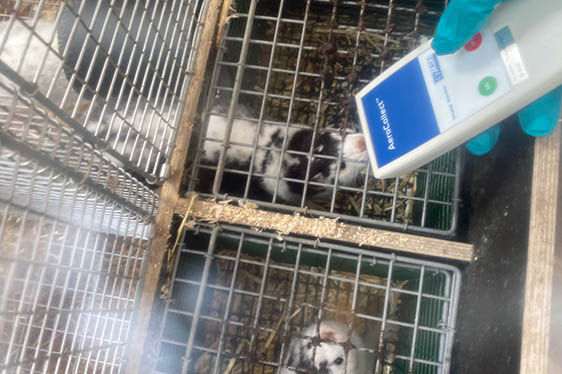Society

Sep 15 2020 - Humans, not mink farms, spread coronavirus in society. This is one of the conclusions of a new study from experts in the Dutch Outbreak Management Team Zoonosis (OMT-Z), who have conducted research on Covid-19 infected mink farms in The Netherlands.
Genetic comparison documented that DNA sequences in people living in the local communities around mink farms reflected the general diversity in The Netherlands, and were not related to DNA sequences found in mink farms in the area. Yet, caution is needed with regards to Covid-19 and mink farms. The study also confirms that mink-to-human transmission of coronavirus is possible, and strict biosecurity measures are essential to keep the virus in check on mink farms.
People spread coronavirus between mink farms.
In The Netherlands 52 farms have been infected with coronavirus since April. The infected Dutch farms have not contributed to spreading the virus in human society, but mink farms have spread coronavirus to other mink farms. The OMT-Z research was able to link DNA sequences from most farms in the research with each other. Humans turned out to be the most common epidemiological link, for example between farms with the same owner, exchange of farm workers or common feed supply.
In some cases, there was no obvious link between farms with shared DNA sequences. Therefore, farm cats or other animals are mentioned in the OMZ-T research as potential transmitters between mink farms.
Mink farms as Covid-19 reservoirs is a theory, not a fact
As a consequence of the increased number of Covid-19 infected mink farms in The Netherlands, the Dutch state decided to compensate mink farmers, and accelerate the ban on mink farming from original 31 December 2024 to March 2021 (effectively the end of the ongoing production season).
As healthy mink farms pose no risk to public health, the Dutch decision is also tied to mink farms’ assumed potential as so-called reservoirs for coronavirus. While OMT-Z considers this potential “likely”, they also conclude that more research is needed to demonstrate if mink can be an actual reservoir of SARS-CoV-2.
In all likelihood, we will get more knowledge about this soon.
Currently, research is taking place on Covid-19 infected mink farms in Denmark. As a starting point, Denmark chose a different strategy from The Netherlands. Instead of culling infected mink farms, the Danish authorities decided to isolate such farms under strict biosecurity rules, coupled with a nationwide monitoring programme. This strategy provides a unique opportunity to study the development of Covid-19 disease on mink farms.
New research may challenge reservoir theory
The question is this: Will mink populations infected with Covid-19 achieve herd immunity and virus die out - or will virus continue to live on in the mink farm environment? If the virus continues to thrive in the farm environment, even after Covid-19 disease have swept through the farm, it makes up a reservoir.
It was the Dutch experts from OMT-Z who originally coined the theory about Covid-19 mink farm reservoirs. While the theory also underpins the accelerated farming ban in The Netherlands, it was necessarily based on epidemiological assumptions since the ‘clinical trial’ to prove it was aborted with the political decision to cull mink farms as a precautionary measure. This happened approximately four weeks after the farm was infected with Covid-19.
This is not the case of the mink farm research in Denmark. Due to the current Danish no-cull strategy, the on-farm study of coronavirus can continue, and the researchers can directly monitor if the virus lives on in the farm environment or not. The research from Denmark will be published in the coming months.
Besides mink farms in Denmark and The Netherlands, Covid-19 has also been found in one Spanish farm, and two farms in Utah, USA. The Spanish farm was culled as a precautionary measure, while an isolation strategy was imposed on the two farms in Utah.